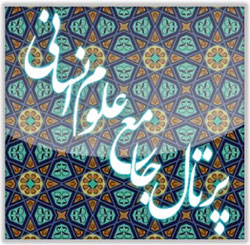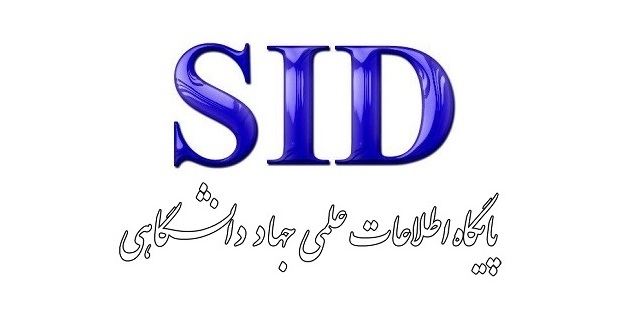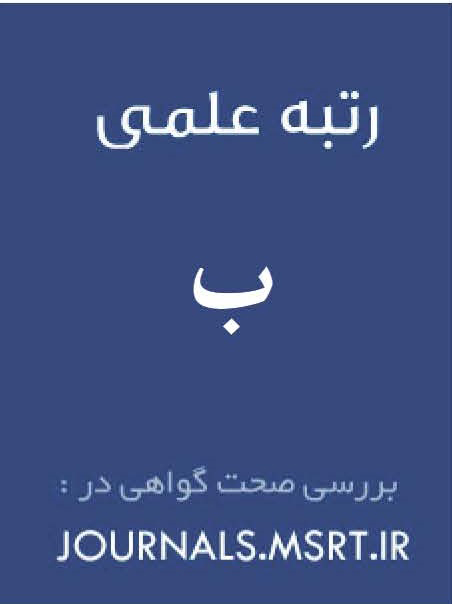بررسی تاثیر تصاویر شعری بر مخاطب در حکایتهای مشترک حدیقه حقیقه سنایی و مثنوی معنوی مولوی
کلمات کلیدی:
تأثیر, ایماژ, تصویر, حدیقه, مثنویچکیده
تصویر یکی از مهمترین ابزارهای ادبی برای انتقال مفاهیم است. آنچه موجب تأثیرگذاری بیشتر تصاویر شعری میشود، تخیل و تخییل شاعرانه است. واژه تصویر معادل ایماژ است که برخاسته از تفکرات مکتب ادبی ایماژیسم است که در اوایل قرن بیستم در انگلستان توسط عدهای به رهبری هیوم بر اساس نظریات برگسون فیلسوف نامدار فرانسوی بنیاد نهاده شد. شاعران با آگاهی به جهان هستی مینگرند و با گزینش تصاویری که در محیط پیرامون خود میبینند ازآنها برای تجسیم مقولههای انتزاعی و ذهنی استفاده میکنند. به این ترتیبآنها میکوشند فرآوردههای ذهنی خود را به مخاطب انتقال داده و او را به فضای ذهنی خود بکشانند و از این رهگذر، اعتقادات خود را تعمیم دهند. در حدیقه و مثنوی تصاویر مشابهی دیده میشود که از جنبههای مختلف تصویرپردازی با یکدیگر متفاوتند. نظر به این تفاوتها، میزان تاثیرگذاریآنها بر مخاطب تغییر میکند. در این جستار، که به شیوۀ توصیفی تحلیلی انجام پذیرفته، تصاویر موجود در حکایات مشابه حدیقه و مثنوی، استخراج گردیده و از حیث تأثیرگذاری بر مخاطب مورد تحلیل قرار گرفته است. در نهایت نیز مشخص گردید که آنچه موجب تفاوت تأثیرگذاری این تصاویر بر مخاطب گردیده عناصری چون عینیت گرایی، تجسیم، پویایی، تخیل، مثبت اندیشی، رسانگی، جلوههای هنری، توصیف پذیری و زیبایی میباشد.
دانلودها
مراجع
1. Mohammadzadeh Alizamini Y. The Influence of Classical Persian Poets' Imagery on Nima's Visual Poetry. Journal of Contemporary Persian Literature. 2013.
2. Hemmatian M, Ghafouri A. Rhetorical Analysis of Imagery Domains in Fazel Nazari's Poetry. Journal of Literary Techniques. 2019.
3. Salajegheh P. From This Eastern Garden: Institute for the Intellectual Development of Children and Adolescents; 2008.
4. Hemmati C. Comparison of Nature Imagery in Mystical Masnavis of the 7th Century 2019.
5. Zarrinkoub A. Poetry Without Lies, Poetry Without Masks: Elmi Publications; 1993.
6. Tahmasebi F, Saremi Z. Examining Imagery and Introducing Its Types in Ahmad Shamloo's Poetry. Journal of Literary Studies. 2014.
7. Fotouhi M. Analysis of the Image of the Sea in Masnavi. Journal of Humanities, Shahid Beheshti University. 2001.
8. Shafi'i Kadkani MR. Imagery in Persian Poetry: Agah Publications; 1987.
9. Omidali H, Dehrami M. Aesthetic Aspects of Imagery and Its Harmony with Emotion and Thought in Nosrat Rahmani's Poetry. Journal of Grammatical and Rhetorical Studies. 2017.
10. Zarrinkoub A. Exploration in Iranian Mysticism: Amir Kabir Publications; 1990.
11. Zarrinkoub A. Literary Criticism: Amir Kabir Publications; 1990.
12. Abbaspour Tamijani MH. The Transformed Sensitivity of the Modern World and Modern Literature. Negin Journal. 1969.
13. Perrine L. Poetry and Poetic ElementsPB - Rahnama Publications2000.
14. Forouzanfar Ba-Z, Mojtaba D. Hadiths and Stories of Rumi's Masnavi: Amir Kabir Publications; 1997.
15. Moradi M. Diversity of Color Distinction in Manzavi's Poetry and Analysis of Its Innovative and Imitative Aspects. Journal of Poetry Studies. 2016.
16. Kazazi MJa-D. Aesthetics of Persian Speech: Markaz Publishing; 1989.
17. Rezaei Jamkarani A. Simile: Evolution, Analysis, and Critique: Morvarid PublicationsER -; 2017.
18. Masbooq M, Ghaemi M, Farokhi Rad P. Examining the Dynamism and Vitality of Imagery in Al-Mutanabbi's Poetry. Lisan Mobin. 2011.
19. Fotouhi Rudmajani M. The Rhetoric of Imagery: Sokhan Publishing; 2006.
20. Dorry Z. Explanation of the Difficulties of Sana'i's Hadiqat al-Haqiqah: Zavvar Publications; 2013.
21. Shafi'i Kadkani MR. The Poet of Mirrors: Agah Publications; 1997.
22. Kolahchian F, Noraei E, Nazari Far F. Reflection on the Content Function of Color in Rumi's Ghazals. Journal of Literary Text Studies. 2017.
23. Partovi S. Structural Comparison of Shared Stories in Sana'i's Hadiqah and Rumi's Masnavi. Journal of Text Criticism, Analysis, and Aesthetics. 2022.
24. Pourhosseini M. The Meaning of Color: Honar Abi PublishingER -; 2005.
25. Luscher M. Psychology and Colors: Afarinesh Publishing; 1994.
26. Noble W. Suspense and Narrative Action: Resh Publications; 2008.
27. Mosharraf M. Rumi and Mystical Interpretation: Sokhan Publishing; 2016.
28. Safaei Sangari A, Alyani R. Semiotics of the Animal Symbol of the Lion in Shams' Ghazals. Journal of Mysticism. 2018.
29. Fatehi S, Ghahramani A. The Function of the Element of Color in Masnavi. Bahar Sokhan. 2017.
30. Dastgheib A. Imagery in Poetry. Negin Journal. 1969.
31. Fallah G, Zarei M. Indian Style in Fazel Nazari's Poetry. Khwarazmi University Press. 2015.
32. Shamisa C. Stylistics of Persian Poetry: Ferdows Publications; 1999.
33. Farzi Shoob M. From Sea to River: Khamoosh Publishing; 2020.
دانلود
چاپ شده
ارسال
بازنگری
پذیرش
شماره
نوع مقاله
مجوز
حق نشر 2025 علی ایمانی زاده (نویسنده); مریم خادم ازغدی; فاطمه حیدری, عطاالله کوپال (نویسنده)

این پروژه تحت مجوز بین المللی Creative Commons Attribution-NonCommercial 4.0 می باشد.








